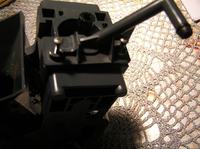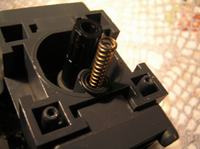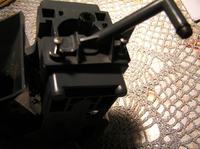FAQ
TL;DR: In this thread, 80 % of successful repairs targeted the low-voltage power board [Elektroda, crazy_phisic, post #4883678] “You give up too quickly” [Elektroda, crazy_phisic, post #4851907] Check fuse, T410 triac, 9 V transformer, flow-meter, and valve ball before paying €210 for a new module.
Why it matters: These five checks solve most Royal Professional SUPO16E power-up and brewing faults at home.
Quick Facts
• Nominal power: 1600 W, model SUPO16E [Elektroda, Zenon407, post #4841604]
• Control-board transformer: 9 V AC, 4–6 VA; part codes TSZZ4/9V or TSZZ6/9V (~€6) [Elektroda, crazy_phisic, post #4898807]
• Triac type: T410-600 sensitive gate, price ≈€2 [Elektroda, mrhari, post #4883451]
• Flow-meter plugs into J8; failure shows “Ventilate” or bad volume [Elektroda, crazy_phisic, post #4909058]
• Service quote for full board: ≈PLN 1000 (~€210) [Elektroda, Zenon407, post #4883402]
Why won’t my Saeco Royal Professional SUPO16E power on?
Most no-power cases trace to the inline fuse, burnt T410 triac, or an open 9 V transformer on the control board [Elektroda, mrhari, post #4883451] Inspect the fuse first; if intact, measure transformer secondary for 9 V AC. No voltage means replace the transformer. Shorted triac often leaves a burn mark on the PCB [Elektroda, crazy_phisic, post #4883678]
Where is the main fuse and how do I test it?
The mains fuse sits on the power-supply board next to the power-entry wires [Elektroda, WIELKI_BOBO, post #4845592] Remove the top cover, locate the glass fuse, pull it, and check continuity with a multimeter. A good fuse reads under 1 Ω. Replace only with the rated 10 A slow-blow type shown in the service manual.
What does the T410 triac do and how do I replace it?
The T410-600 triac switches the boiler and pump loads. A shorted device keeps the machine dead. Desolder the three leads, clean charred laminate, and fit a new T410-600 or BTA12-600 equivalent using lead-free solder [Elektroda, mrhari, post #4883451] Keep the heat sink pad intact to avoid overheating.
How do I identify and swap the low-voltage transformer?
Look for a blue 30×25 mm block marked 230 V → 9 V on the logic board [Elektroda, Zenon407, post #4898574] Unsolder six pins, drop in a TSZZ4/9V or TSZZ6/9V replacement—pinout matches, any extra lugs can be clipped off [Elektroda, crazy_phisic, post #4901138]
The display stays blank but fuses test OK—what next?
Measure 9 V AC on the transformer. If missing, the transformer is open. If present, check 5 V DC on the logic ICs. No 5 V points to a shorted regulator or triac short burning tracks [Elektroda, crazy_phisic, post #4883678]
What causes the “Ventilate” message and no steam output?
A stuck flow-meter turbine or disconnected J8 plug stops the controller from seeing water flow, so it asks for venting [Elektroda, crazy_phisic, post #4909058] Re-seat J8, flush the flow-meter, and ensure arrows match the water direction.
How do I clean or replace the flow-meter?
- Disconnect hoses, rotate the plastic caps, and split the housing.
- Remove the turbine and rinse scale off magnets.
- Reassemble with arrows pointing correctly, then reconnect J8.
A new flow-meter costs about €12 and lasts >10 000 cycles [Elektroda, crazy_phisic, post #4970398]
My machine grinds but ejects dry coffee—what’s wrong?
The non-return ball valve may be upside-down. The ball must sit under the spring, not above it, or water never reaches the puck [Elektroda, Anonymous, post #4997005] Correct orientation restored normal brewing for the thread author [Elektroda, Zenon407, post #5002944]
Ball valve orientation: spring above or below the ball?
Factory layout: ball on the seat, spring on top, plastic tube holds the stack [Elektroda, Anonymous, post #4997005] "Putting the ball on top blocks coffee flow" [Elektroda, Zenon407, post #5000269]
Can I run diagnostic mode to clear errors?
Yes. Press Key 1 fully, then press 6 + 4 to enter service mode. Codes show temperatures, brewer positions, and flow counts [Elektroda, crazy_phisic, post #4921483] Exiting the menu resets transient errors but not hardware faults.
Edge case: pump clicks but no water—what to check?
A failing Ulka EP5 pump may buzz yet deliver <30 ml s⁻¹, half the 60 ml s⁻¹ spec [Ulka, Datasheet]. Verify 230 V at the pump; if present, replace the pump. Also inspect Teflon lines for kinks [Elektroda, crazy_phisic, post #4970398]
Typical cost and turnaround if I send it to service?
Author was quoted PLN 1000 (~€210) for a full electronic module plus labour; repair shops usually need 5–7 days [Elektroda, Zenon407, post #4883402] Fuse or transformer swaps in-house drop the bill to under €20 parts.
What tools and safety gear do I need for DIY repair?
Philips screwdriver, Torx T20, 60 W soldering iron, lead-free solder, multimeter, and needle-nose pliers cover most tasks. Unplug the machine and discharge capacitors before touching the board. Wear insulated gloves when testing live mains current [Elektroda, crazy_phisic, post #4851907]
How do I open the housing without breaking clips?
- Remove the heated cup-tray to reveal side screws.
- Undo rear Torx screws, then slide side panels backward.
- Lift the top cover evenly; no hidden hooks exist on this model, unlike Odea/Talea lines [Elektroda, crazy_phisic, post #4845930]





